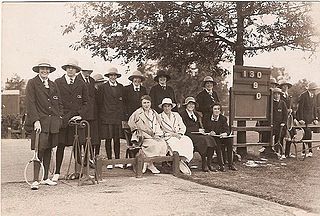Sport Informatics and Analytics/Capstone
Contents
Introduction
This page brings together the course content as a capstone page for the Sport Informatics and Analytics course. It provides an opportunity to reflect on the epistemic culture[1] of the subject field.
The aim of this OERu course has been to explore the intersection of informatics and analytics in sport contexts. We hope you have had an opportunity to visit the four themes that form the framework for the course.
Connecting learners with open resources
This is an OERu course that has been designed to contribute to the community service and outreach mission of the OERu.
The Audiences and Messages (T4) contained within it a discussion of personal learning.
Pattern recognition
Monitoring performance
Audiences and messages
Twenty-four questions
Thank you
We hope you have enjoyed the content of this OERu course. This is a wiki and the content is updated and changed continuously. The bottom of each page indicates when the page was last modified.
We would be delighted to receive any thoughts you have about the course and any content you think we should include.
Thank you for finding us.
References
- ↑ Cestina, Karen (1999). "Culture in global knowledge societies: knowledge cultures and epistemic cultures". p. 363. http://knowing.soc.cas.cz/static/forum/msg476/knorr_cetina_culture_in_global_knowledge_societies.pdf.
- ↑ Wenger, Etienne (1998). Communities of practice: learning, meaning, and identity. Cambridge: Cambridge University Press.
- ↑ Wenger, Etienne (June 2006). "Communities of practice a brief introduction". http://www.linqed.net/media/15868/COPCommunities_of_practiceDefinedEWenger.pdf. Retrieved 29 February 2016.
- ↑ Wenger, Etienne (June 2006). "Communities of practice a brief introduction". http://www.linqed.net/media/15868/COPCommunities_of_practiceDefinedEWenger.pdf. Retrieved 29 February 2016.
- ↑ Jovanović, Mladen (13 March 2015). "AFL Data Analysis Report". http://complementarytraining.net/wp-content/uploads/2015/03/AFL_Analysis.html. Retrieved 26 March 2016.
- ↑ Popova, Maria (12 August 2009). "Data Visualization: Stories for the Information Age". http://www.businessweek.com/innovate/content/aug2009/id20090811_137179.htm. Retrieved 27 February 2016.
- ↑ Couros, George (23 February 2016). http://connectedprincipals.com/archives/12323. Retrieved 29 February 2016.
- ↑ Schon, Donald (1983). The Reflective Practitioner. New York: Basic Books. p. 42.
